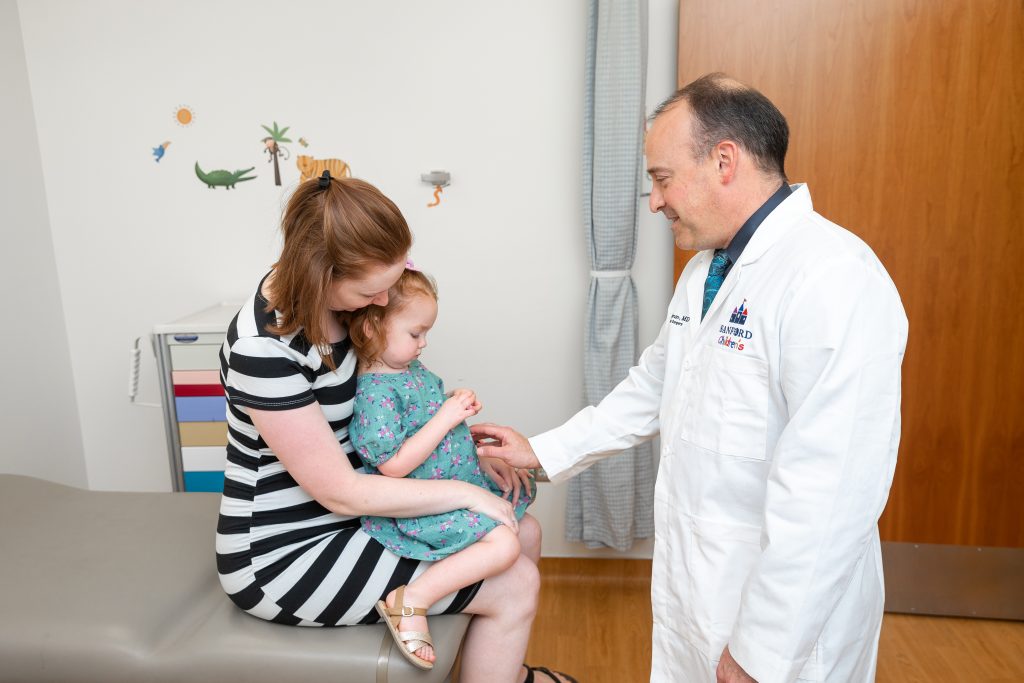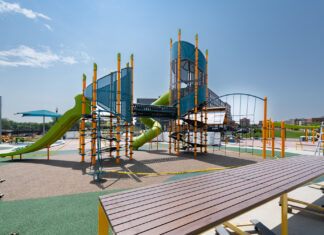When a child is born, new parents have so many things to think about. While the child is young, something parents should be aware of is umbilical hernias and when to be concerned about them.
“An umbilical hernia is an opening in the muscle layer at the bellybutton where the umbilical cord came through,” said Dr. Shannon Carruthers, general pediatrician with Sanford Children’s. “In a lot of kids, there’s a little opening where abdominal fluid and intestine can pop through and look like an outie belly button.”
FACT
Sanford Children’s provides 35 specialties through over 135 experts.

For up to five years after birth, she says it isn’t abnormal for a child to experience this.
“Sometimes parents have no idea that it’s there,” said Carruthers.
Umbilical hernias don’t often cause symptoms or immediate problems.
“If we can catch it on our well visits, we can follow it for a couple of years and make sure it’s not causing any issues,” said Carruthers.
Typically with time, the layer of muscle will stitch itself closed, but that isn’t always the case. After a child’s fifth birthday, an umbilical hernia could be concerning.
“If it’s still present, it usually will not close on its own,” said Carruthers.
“In general, children are pretty asymptomatic with umbilical hernias. They don’t display any symptoms and it doesn’t cause any immediate concerns or issues.”
Dr. Shannon Carruthers

Pediatric Surgery Treatment
Here are just a few of the conditions treated through Sanford Children’s pediatric surgery.
Crohn’s disease
Esophageal atresia and tracheoesophageal fistula
Gastroschisis
Hypertrophic pyloric stenosis (HPS)
Intussusception
Necrotizing enterocolitis (NEC)
Ovarian torsion
Pectus carinatum (pigeon chest)
Pectus excavatum
Thyroglossal duct cyst
Undescended testicle
Wilms tumor
Around age five, Carruthers says she refers patients with umbilical hernias to pediatric surgery, which is one of 35 specialties at the Sanford Children’s Castle of Care. Pediatric primary care providers have a strong connection with these specialists, ensuring that every patient receives the care they need to stay safe and healthy.
After a referral, the parents and child will visit the Sanford Children’s pediatric surgeon to evaluate if the child will benefit from the surgery.
“That’s a simple, same-day procedure that is generally well tolerated by kids,” said Carruthers. “The surgeon will discuss with them what the procedure looks like, how they do the surgery, and what the recovery and follow up will look like.”
She says the procedure is minimally invasive.
“They would make an incision in the skin and suture the fascia and muscle layer closed,” explained Carruthers. “Then they create a cute little belly button. They do a great job.”

“We can see it and feel it pretty soon after the umbilical cord stump falls off. Most umbilical hernias will close by the time a child is 5 years old.”
Dr. Shannon Carruthers
During this time, the patient will continue to see their primary care pediatrician, and she says they will monitor after the procedure.
“We refer patients to pediatric surgery, so that hernia doesn’t grow and get bigger with the child and increase the risk of having an incarcerated hernia, which then would turn into an emergency surgery,” said Carruthers.
With an incarcerated hernia, she says part of the intestine may get stuck outside of the abdominal wall—which could cause necrosis or death of the organ.
Communicating with the child’s primary care provider is an important step to ensure the child’s umbilical hernia heals properly, preventing the worst.

















